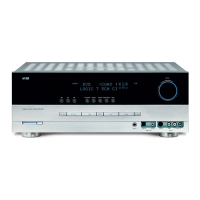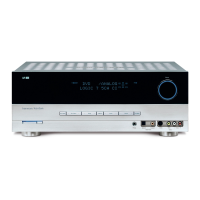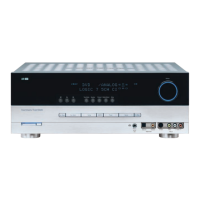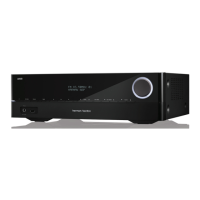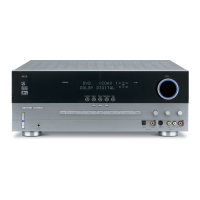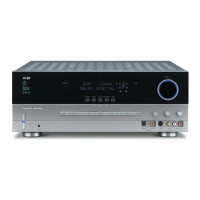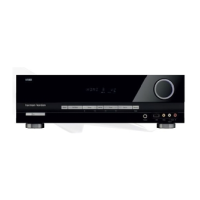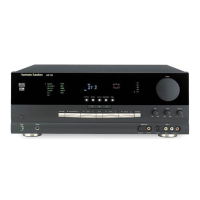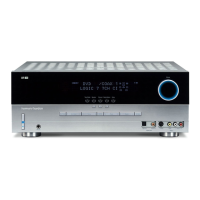
Do you have a question about the Harman Kardon AVR 140 and is the answer not in the manual?
| Channels | 5.1 |
|---|---|
| Total Harmonic Distortion (THD) | 0.07% |
| Type | AV Receiver |
| Frequency Response (extended) | 10Hz - 100kHz |
| Input Sensitivity | 200mV |
| Tuner Bands | AM/FM |
| Output Video Connections | 1 composite, 1 S-video |
| HDMI | No |
| Audio Decoders | Dolby Digital, DTS |
| Video Outputs | 1 composite, 1 S-video |
| Input Impedance | 47k ohms |
| Output Power / Channel | 40 watts |
| Output Impedance / Channel | 8 ohms |
| Surround Sound Effects | DTS |
| Input Video Connections | 3 composite |
| Frequency Response (limited) | 20Hz - 20kHz |
| Video Inputs | 3 composite |
| Audio Inputs (short) | 4 analog, 2 digital |
| Input Audio Connections | 4 analog, 2 digital (1 coaxial, 1 optical) |
Overview of the AVR 140's capabilities and design philosophy.
Details the key features and functionalities of the audio/video receiver.
Crucial guidelines for safe operation and installation to prevent hazards.
Recommendations for placing the unit to ensure proper operation and ventilation.
Identifies and describes the purpose of each button and indicator on the front panel.
Explains how to adjust volume, bass, and treble settings.
Details buttons for selecting different surround sound modes.
Guides on connecting audio sources like CD players, tape decks, and speakers.
Details on connecting video sources and digital audio inputs/outputs.
Explains primary remote functions like power, input selection, and mute.
Details remote buttons for selecting DSP, Dolby, DTS, and Logic 7 modes.
Describes remote buttons for AM/FM tuning, mode selection, and tuning.
Steps for setting up the receiver after unpacking.
Guidance on connecting various audio components to the receiver.
Guidance on choosing and positioning speakers for optimal surround sound.
Recommendations for optimal speaker positioning in a listening environment.
Outlines the overall process for configuring the receiver's settings.
Instructions on utilizing the OSD system for setup and adjustments.
Describes Semi-OSD and Full-OSD menus for system customization.
Configuring input sources, naming, and assigning digital/component connections.
Adjusting tone controls (bass, treble) and their signal path.
Selecting preferred surround modes for various audio sources.
Setting speaker types (Large/Small) for bass management.
Accessing settings like Speaker Size, Crossover, and Delay.
Adjusting crossover points for different speaker groups.
Setting speaker delay times based on listening position.
Calibrating speaker output levels for balanced sound.
Procedure to reset the system's memory to factory defaults.
Guide to daily use, including powering on/off and basic functions.
Steps for powering the unit on, off, and using standby mode.
How to switch between different audio and video inputs.
Choosing appropriate surround modes for different audio sources.
Information on using digital audio sources and their playback.
A reference table detailing available surround modes and their features.
Explanation of Dolby Digital and DTS audio formats and their use.
Guide to connecting and selecting digital audio sources.
How to use the Night Mode feature for enhanced dialogue clarity.
Instructions for tuning AM/FM stations and using presets.
Guidance on using the receiver's outputs for recording.
Instructions for connecting and controlling an iPod via The Bridge.
Fine-tuning speaker output levels using program material.
Adjusting front-panel display brightness for viewing comfort.
Setting displays to fade out after a period of inactivity.
Setting a default volume level for when the unit is powered on.
Configuring Semi-OSD and Full-OSD display timeouts.
Setting whether to use default or last-selected surround mode for sources.
Instructions for programming the remote to control other devices.
Using direct codes to program the remote for specific devices.
Creating sequences of commands for automated control.
How functions map to buttons for different controlled devices.
Allowing volume control to affect other devices.
Procedure to restore the remote to factory default settings.
Lists common issues and their potential causes and solutions.
Procedure to reset the unit's memory to clear operational issues.
